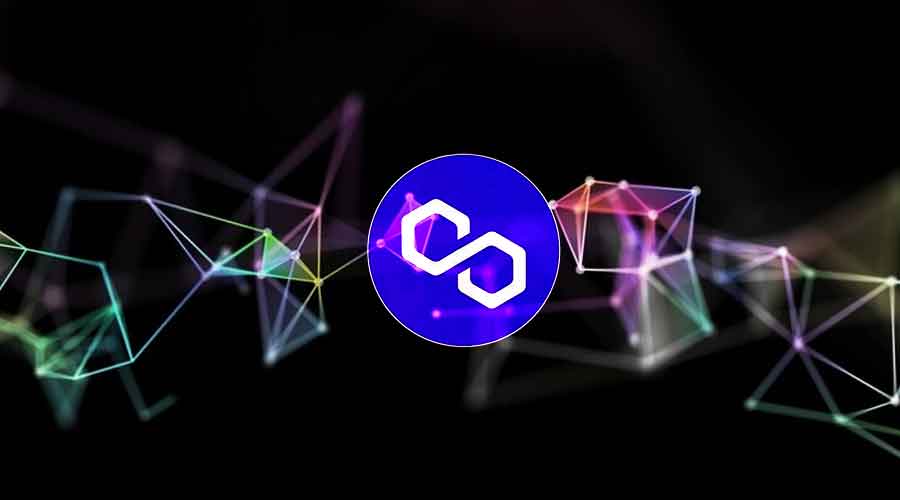 Polygon (MATIC): Ethereum’s Layer 2 Marvel Unleashed for Seamless Scalability and Integration
Polygon (MATIC): Ethereum’s Layer 2 Marvel Unleashed for Seamless Scalability and Integration
Embark on a journey into the heart of blockchain innovation as we delve into the transformative realm of Polygon (MATIC), Ethereum’s Layer 2 marvel. In this exploration, we navigate the intricate landscape of scalability, interoperability, and seamless integration that Polygon offers to the decentralized applications (DApps) ecosystem. As Ethereum grappled with scalability challenges, Polygon emerged as a beacon of solution, unleashing a revolutionary Layer 2 scaling framework. Join us as we unravel the profound impact of Polygon on DApps and beyond, exploring how this blockchain marvel reshapes the landscape by providing faster transactions, reduced fees, and enhanced interoperability—a true testament to the evolution of Ethereum’s capabilities in the ever-expanding world of decentralized technologies.
Understanding the Scalability Challenge on Ethereum:
Ethereum, the pioneer of smart contract platforms, has been the backbone of decentralized applications and decentralized finance (DeFi) projects. However, its success led to an unforeseen consequence—network congestion. As more projects and users flocked to Ethereum, transaction fees soared, and confirmation times suffered. This congestion hindered the platform’s potential and called for innovative solutions.
Polygon’s Emergence as a Layer 2 Scaling Solution:
Polygon, born as MATIC Network, emerged as a beacon of hope for Ethereum scalability issues. Positioned as a Layer 2 scaling solution, Polygon aims to enhance Ethereum’s capabilities by providing a framework for building and connecting various blockchain networks. The goal is to alleviate congestion, reduce fees, and enhance the overall user experience while maintaining compatibility with the Ethereum Virtual Machine (EVM).
The Architecture of Polygon:
At its core, Polygon employs a multi-chain architecture, allowing for the creation of scalable and interoperable blockchain networks. It introduces various components, including:
Polygon PoS (Proof-of-Stake) Chain:
Serving as the primary chain, the PoS chain secures the network through a proof-of-stake consensus mechanism.
It facilitates fast and low-cost transactions, acting as the Layer 2 scaling solution for Ethereum.
Polygon SDK (Software Development Kit):
The SDK enables developers to create their custom blockchain networks, tailored to specific use cases.
This flexibility empowers DApp creators to design scalable solutions without compromising security.
Polygon Bridge:
The bridge establishes connectivity between the Polygon PoS chain and the Ethereum mainnet.
It facilitates the seamless transfer of assets and ensures interoperability between the two networks.
Benefits of Polygon for Ethereum Users:
Scalability:
Polygon significantly enhances Ethereum’s throughput, allowing for faster and more efficient transactions.
With multiple chains operating in parallel, the network can handle a higher volume of transactions without sacrificing speed.
Reduced Transaction Fees:
By offloading transactions to the Polygon PoS chain, users experience substantially lower transaction fees compared to the Ethereum mainnet.
This reduction in fees encourages greater participation and adoption of decentralized applications.
Interoperability:
Polygon’s interoperable architecture fosters collaboration between different blockchain networks.
DApps can leverage the capabilities of multiple chains, creating a more versatile and interconnected ecosystem.
Use Cases and Adoption:
The versatility of Polygon’s scaling solution has led to widespread adoption across various sectors. DeFi projects, gaming platforms, and non-fungible token (NFT) marketplaces have embraced Polygon to overcome the limitations of the Ethereum network.
DeFi on Polygon:
DeFi protocols, seeking efficient and cost-effective transactions, have migrated to Polygon.
Yield farming, lending, and decentralized exchanges on Polygon offer users a seamless experience with reduced fees.
NFT Marketplaces:
NFT platforms leveraging Polygon benefit from a scalable infrastructure that enhances the creation, buying, and selling of digital assets.
Artists and collectors appreciate the reduced costs associated with minting and trading NFTs.
Gaming Industry:
Gaming DApps find a robust environment on Polygon, where low-latency transactions and reduced fees improve the gaming experience.
In-game assets, powered by Polygon, can be seamlessly traded and utilized across various gaming platforms.
Challenges and Future Developments:
While Polygon has made significant strides in addressing Ethereum’s scalability issues, challenges persist. Ensuring the security and decentralization of the PoS chain, maintaining a stable bridge between Polygon and Ethereum, and fostering continued developer adoption are ongoing priorities.
Looking ahead, Polygon aims to further enhance its infrastructure by integrating Ethereum-compatible solutions, supporting Layer 2 scaling for other blockchain networks, and exploring advancements in consensus mechanisms.




